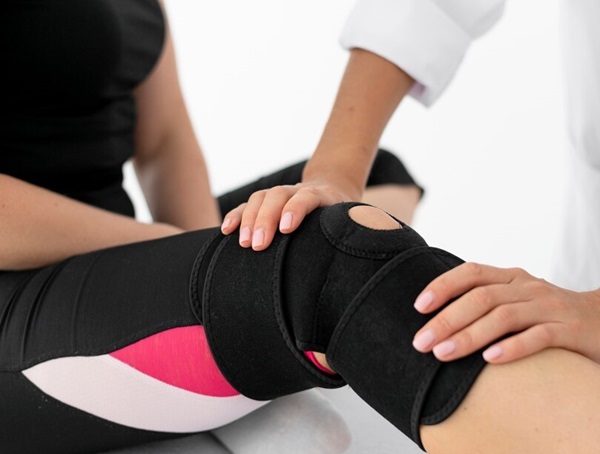Knee braces are a common sight among athletes, individuals recovering from injuries, and those dealing with chronic knee conditions. But what exactly are knee braces, and how do they work? In this comprehensive guide, we’ll explore everything you need to know about knee braces, including their types, purposes, benefits, and how to choose the right one for your needs.
1. Types of Knee Braces:
- Prophylactic Braces: These braces are designed to prevent knee injuries, commonly worn by athletes during high-risk activities.
- Functional Braces: Functional braces provide support to injured knees, typically used by individuals recovering from ligament injuries or surgeries.
- Unloader or Offloader Braces: These braces are specifically designed to alleviate pain and pressure on a specific part of the knee, often used by individuals with osteoarthritis or meniscus tears.
- Rehabilitative Braces: Rehabilitative braces are used post-surgery or injury to restrict movement and support the knee during the healing process.
- Patellar Stabilizing Braces: These braces are designed to stabilize the kneecap (patella) and prevent it from shifting out of place, commonly used by individuals with patellar instability or dislocation.
2. Purposes of Knee Braces:
- Provide Support: Knee braces help stabilize the knee joint and provide support to weakened or injured ligaments and muscles.
- Reduce Pain: Certain types of knee braces, such as unloader braces, are designed to alleviate pain by redistributing pressure away from the affected area.
- Prevent Injuries: Prophylactic braces are used to reduce the risk of knee injuries during sports or activities that involve repetitive movements or high impact.
- Aid Recovery: Rehabilitative braces assist in the recovery process post-injury or surgery by limiting movement and protecting the knee from further damage.
3. Benefits of Using Knee Braces:
- Improved Stability: Knee braces help improve joint stability, reducing the risk of falls or further injury.
- Pain Relief: Many individuals experience reduced pain and discomfort when wearing knee braces, especially those with conditions like arthritis or ligament injuries.
- Enhanced Performance: Athletes often find that wearing knee braces can improve performance and confidence by providing added support and protection during intense activities.
- Injury Prevention: Prophylactic braces can help prevent common knee injuries, such as ligament sprains or tears, particularly in sports with high injury rates like basketball or football.
4. How to Choose the Right Knee Brace:
- Consult a Professional: If you’re unsure about which knee brace is suitable for your needs, consult a healthcare professional or orthopedic specialist for personalized recommendations.
- Consider Your Activity Level: Choose a knee brace that matches your activity level and specific needs. For example, athletes may require different braces than individuals with chronic knee conditions.
- Proper Fit: Ensure that the knee brace fits comfortably and securely without restricting blood flow or causing discomfort. Follow the manufacturer’s sizing guidelines for the best fit.
- Type of Support Needed: Determine whether you need mild, moderate, or maximum support based on your injury or condition. Different types of knee braces offer varying levels of support and stability.
In conclusion, knee braces are versatile orthopedic devices that serve multiple purposes, from injury prevention to pain relief and rehabilitation. By understanding the different types of knee braces, their purposes, benefits, and how to choose the right one, you can make informed decisions about incorporating knee braces into your daily life or athletic pursuits. Remember to consult with a healthcare professional for personalized guidance and recommendations tailored to your individual needs.

